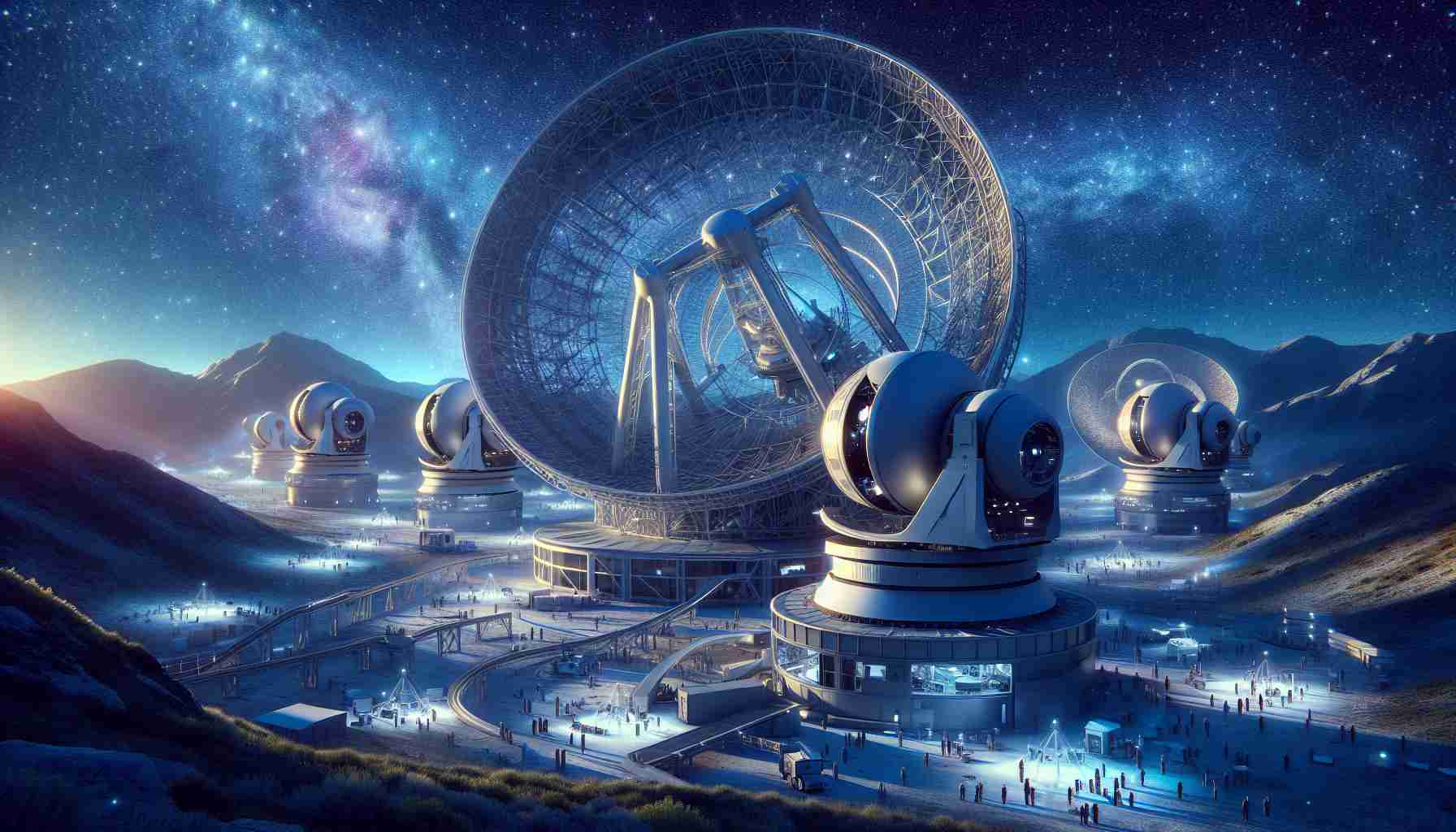In the ever-evolving field of astronomy, two groundbreaking projects are set to redefine our understanding of the universe: the Giant Magellan Telescope (GMT) and the Thirty Meter Telescope (TMT). Both projects are partially funded by the National Science Foundation (NSF), an organization dedicated to advancing scientific discovery. These telescopes represent a leap forward in observational capability, offering unprecedented detail and depth when peering into the cosmos.
Why are these projects so significant? The GMT, located in Chile’s Atacama Desert, and the TMT, slated for Mauna Kea, Hawaii, are designed to outclass current telescopes with their enormous mirrors—24.5 meters in the GMT and 30 meters in the TMT. These capabilities will enable astronomers to explore distant galaxies, search for potentially habitable exoplanets, and unravel the mysteries of dark matter and dark energy.
The NSF’s involvement is crucial not only in terms of funding but also in fostering international collaboration, bringing together scientists from around the globe. This cooperation underscores the collaborative spirit needed to tackle some of the most profound questions about our universe’s origin and fate.
In looking to the future, the completion of these telescopes, anticipated in the next decade, will mark a new era in astronomy. By supporting the GMT and TMT, the NSF plays a pivotal role in pushing the boundaries of cosmic exploration, inviting humanity to witness the universe like never before. As we look to the stars, these advances might just unlock the keys to understanding our place in the cosmos.
The Dawn of a New Era in Astronomy: What the GMT and TMT Mean for the Future
Astronomy is on the brink of a revolutionary shift with the advent of the Giant Magellan Telescope (GMT) and the Thirty Meter Telescope (TMT). Supported partly by the National Science Foundation (NSF), these extraordinary projects promise to deepen our comprehension of the universe. However, beyond their impressive specifications lies a wealth of additional insights and implications worth exploring.
Transformative Features and Capabilities
Both the GMT and TMT stand out for their colossal mirror sizes, representing a quantum leap in astronomical technology. The GMT’s 24.5-meter mirror and the TMT’s 30-meter structure will gather more light than any existing ground-based telescopes, significantly enhancing image resolution and sensitivity.
These telescopes will be equipped with advanced adaptive optics, which correct atmospheric distortions, delivering images sharp enough to rival those captured by space-based telescopes. This means astronomers will be able to observe celestial phenomena with an unprecedented level of clarity.
Pros and Cons of Location
Pros: Both locations—Chile’s Atacama Desert for the GMT and Mauna Kea, Hawaii, for the TMT—are carefully chosen for their optimal observing conditions. Atacama’s high altitude and dry climate, along with Mauna Kea’s clear skies and low light pollution, make these sites ideal for unveiling cosmic secrets.
Cons: However, these locations are not without controversy. The construction of the TMT in Hawaii has faced opposition from local communities who consider the land sacred. Such controversies necessitate a delicate balance between scientific progress and cultural respect.
Pricing and Funding Insights
While both projects benefit from substantial NSF funding, the cumulative cost is estimated to be in the multi-billion-dollar range. This high investment reflects the advanced technology and engineering marvels encompassed in these telescopes.
Future Trends and Insights
As we look towards the future, the integration of artificial intelligence and machine learning in data processing from these telescopes is anticipated to set new trends. These technologies will accelerate the analysis of vast datasets, enabling quicker discovery and deeper understanding of astronomical findings.
Global Collaborations and Innovations
The international collaboration facilitated by these projects is set to foster a new age of scientific innovation. By bringing together top minds from various countries, the GMT and TMT are not only telescopes but also platforms for fostering global scientific dialogue and ingenuity. Such collaborations could inspire future initiatives across scientific disciplines.
Sustainability and Environmental Considerations
Growing attention to sustainability impacts both telescope projects. Efforts are underway to minimize environmental footprint, such as renewable energy usage and habitat preservation strategies, ensuring that science progresses responsibly.
Market and Security Aspects
The indirect market impact of these telescopic innovations can ripple through industries such as optics, computing, and materials science, potentially leading to broader technological advancements. Moreover, advances in cybersecurity will be crucial to protecting the vast amounts of data produced and shared internationally.
For more information about these projects and the NSF’s initiatives in astronomy, visit the National Science Foundation.
As the GMT and TMT move closer to completion, a new chapter awaits in the exploration of the cosmos. Their groundbreaking capabilities promise not only to expand the boundaries of our knowledge but also to redefine them, offering us a clearer glimpse of the wonders that lie beyond our world.
















